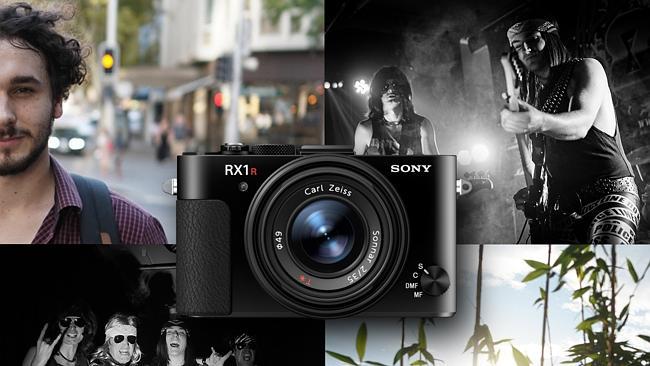Review: Sony’s pocket rocket camera RX1R II a fixed-lens delight
Sony’s newest full frame camera, the RX1R II, is a fixed-lens delight that’s bound to get you noticed.

Sony’s newest full-frame camera, the RX1R II, is the kind of object you want to hold.
The sturdy but lightweight magnesium-alloy body feels decidedly premium and professional, while Sony hasn’t skimped on consumer-friendly add-ons like a swivelling display and impressively sharp pop-out digital viewfinder.
A range of programmable buttons adorn the back and top of the device, while around front a delightfully tactile on-lens aperture ring clicks to a maximum aperture of f2.
The sensor inside is borrowed from Sony’s high resolution a7R II, with an impressive poster-ready 42.4-megapixel resolution and a nifty new variable low pass filter.
The RX1R II looks the part for a professional device, but here’s the thing.
You won’t be swapping lenses or zooming on this camera. The 35mm lens on the front is fixed to the body, meaning if you want to zoom you’re going to be using your feet.
I’ve worked with prime (fixed focal length) lenses a lot, both professionally while creating videos, or privately while shooting street photography. The benefits of a prime lens to a photographer are obvious — sharper images, higher maximum aperture and an often cheaper price tag.
They’re a staple in my camera bag, but I make sure to keep a zoom on hand to swap.
Being constrained to a 35mm focal length changes the way you see the world, literally.
The perspective is a little wider than the human eye and being forced to move to an ideal viewpoint encourages creativity. Where on a zoom lens I might shoot wider to capture the space around a subject, with a fixed lens I might crouch, or find new compositional elements with which to frame.
For street photography, the limitations of the camera bring a sense of purity to capturing images.
The fast autofocus combined with the tactile simplicity of the manual aperture means ephemeral moments won’t slip you by.
I brought the camera along to photograph a friend’s gig and was delighted by the results. Despite a dark environment, the camera didn’t hesitate — images came out with excellent results, shooting decently at ISOs as high as 51,200.
Wide dynamic while shooting RAW meant even when the images seemed dark I could fix them up with just a few minutes in Lightroom.
It’s not all perfect with the RX1R II, however. A poorly positioned video recording button on the right-hand side of the camera was accidentally pressed one too many times, locking up the interface as I tried to wrangle it back to photo mode.
A switch or mode select as on other professional cameras would remedy this, but it’s not my only concern with the video feature.
Once triggered, visually it’s difficult to decipher when the camera is recording, leaving the user confused and annoyed.
Another serious frustration lies in the slow as molasses playback of images. The massive 42.4mp files choked even the fastest SD cards I had on hand, so forget about spending too much time looking back through your snaps.
The camera feels a little stuck in the past, too.
Simple things, like touchscreen control for zooming into your stills, or tapping to focus while looking through the screen are staples on competing cameras.
Sony has, however, included modern features like WiFi, allowing you to send images to a smartphone or tablet for easy file wrangling or editing on the go. $5499 is the price Sony’s set on the RX1R II, leaving you thankful you won’t be spending more money on lenses later. It sits about $1k dearer than its closest in spec detachable lens sibling, the $4499 A7R II, a fair mark-up given the excellent lens attached.
This camera is hard not to love.
It’s a pleasure to use and the images are stunning, but the high price tag combined with a lack of flexibility means only a small niche of photographers should give the RX1R II serious consideration over Sony’s marvellous Alpha 7 range.


